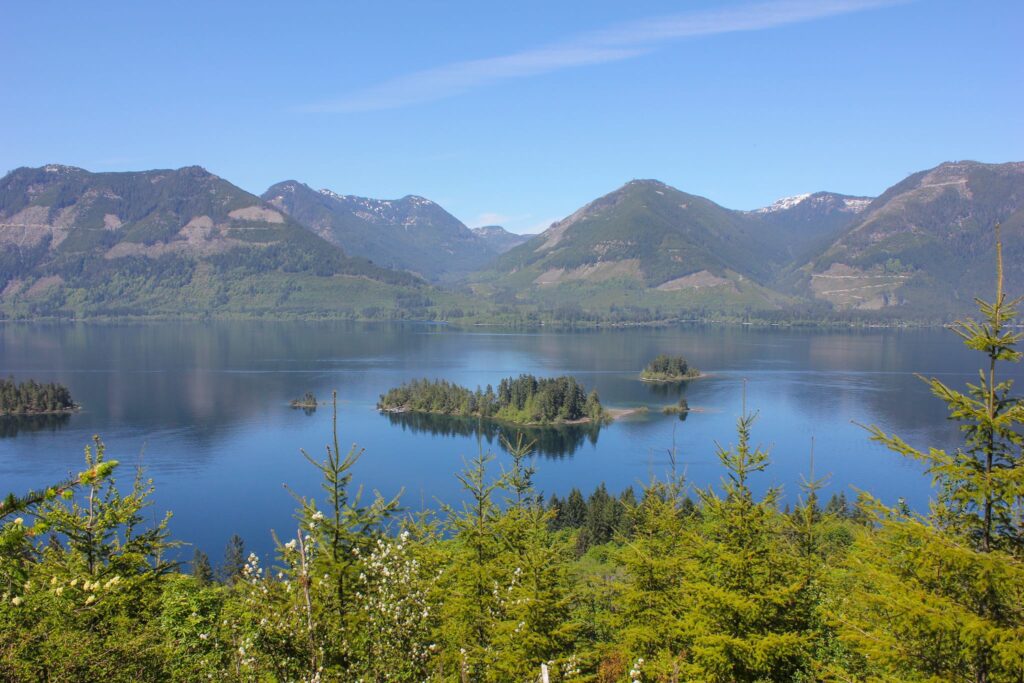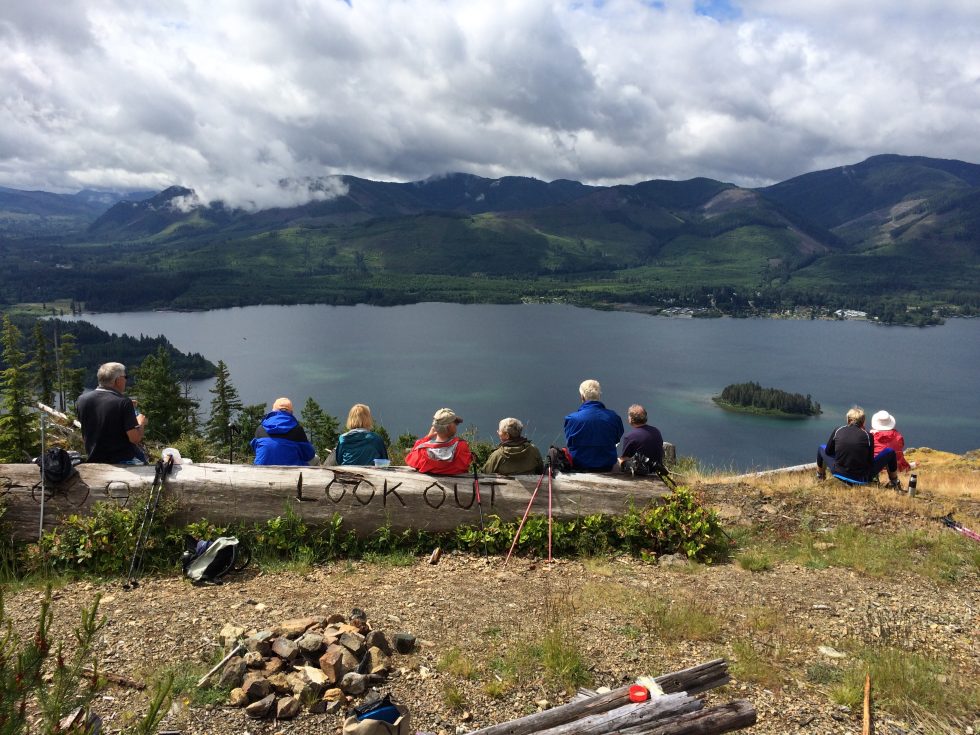Detailed climate normals for Cowichan Lake can be found on Environment Canada’s Web Site.
The Cowichan Lake area climate varies widely from season to season. Being within a maritime climatic zone, the area usually experiences warm, dry summers and mild wet winters. On average, we experience only 14.2 cm of snow sometime between late October and March.
Quite often the area will experience no snowfall from one year to the next. Over 85 per cent of the rainfall occurs between October and April with December being the wettest month. The further one travels toward the West Coast, the higher the amount of rainfall.

July is the sunniest month with 235 hours, but August is usually the warmest, with an average daily temperature of 25 C. Being in the center of Vancouver Island and away from the moderating marine influence, it is not unusual to see temperatures well above 30 C.
Due to the Japanese Current which runs close to the West Coast of Vancouver Island the climate varies greatly from one location to another. How close you are to the coast and your elevation help determine your weather experience. It is not unusual to have temperatures over 30 C. at the Town of Lake Cowichan and a west coast mist blanketing the western end of Nitinat Lake, the Carmanah Pacific Provincial Park and Pacific Rim National Park.
From Accommodations to Restaurants, find out what to do while visiting Cowichan Lake

Like temperature and precipitation, the wind velocity also changes with location and season. During the summer, a gentle breeze is normal throughout the central area of the Cowichan Valley. However, adjacent the larger lakes west of Cowichan Lake, especially Nitinat Lake, the wind speed increases by mid-day and may not subside until after dusk.
This makes for great wind surfing. Cowichan Lake and the lakes east of it do not experience this to the same extent. On occasion in November or December the area can experience very violent and sudden windstorms that seem to funnel through the Cowichan Valley.
Many visitors and residents alike are pleased and amazed with the temperance of our winters. It is not unheard of to have roses blooming on Christmas day, much to the dismay of relatives in the Eastern provinces. The summers get warm but not too hot, and the winters, although they have the potential to get cold, seldom do, for which we are all thankful.
Detailed climate normals for Cowichan Lake can be found on Environment Canada’s Web Site.
Cowichan Lake District Chamber of Commerce